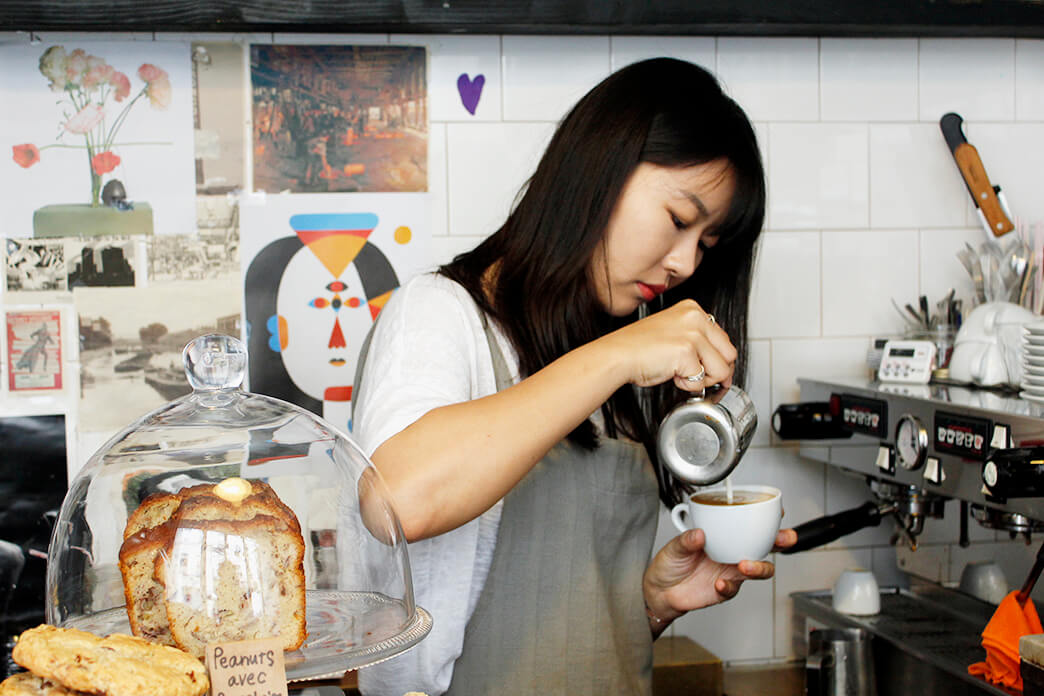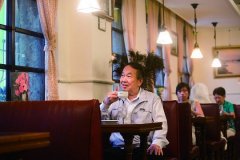Opening a coffee shop: it looks beautiful, but it's hard to do.

For professional baristas, please follow the coffee workshop (Wechat official account cafe_style)
With the popularity of Korean TV dramas, Korean coffee shops unexpectedly ushered in a wave of closure in China. With the rapid growth of the domestic coffee market, the coffee shop has become a more and more important life scene, but compared with Japan, South Korea, Europe and the United States and other countries, the per capita sales of the domestic coffee market is still low. for most ordinary consumers, drinks worth more than 30 yuan a cup are still not high-frequency consumption. Life is difficult not only in Korean stores, but also in many local minority cafes in China. In addition, the whole family, 7-11, Rosen and other convenience stores also began to sell freshly ground coffee, strongly snatching the business of coffee shops.
From opening a hundred stores every year to leaving the building empty
To the surprise of many urban white-collar workers in pursuit of sentiment, the once popular Korean coffee shop has been quietly routed in China. Coffee accompanied you to enter the Chinese market in 2012 and opened more than 600 stores in three years, known as "the first chain coffee in Korea". It once shouted the slogan of "thousands of stores, plans to land on the new third board" and "catch up with Starbucks". Also close to it are brands such as Hollys Coffee, Man Coffee, Zoo Coffee, MangoSix and Tushan Coffee, which have expanded frantically in China in recent years.
Now, Hollis is being collected by the supplier, and Zoo Coffee has been completely taken over by Chinese investors. She is busy with "de-Hanization". The headquarters of Kaitai Building in Beijing East fourth Ring Road has been emptied with coffee.
The excessive pursuit of the speed of expansion is considered to be the most important reason for the closure of Korean cafes. China's coffee market is growing rapidly. China's coffee consumption market reached 70 billion yuan in 2016 and is growing at an annual rate of 15 percent, but the annual consumption per person is 20 cups, which is still limited compared with 140cups in South Korea. and instant coffee still dominates the coffee market.
By contrast, Starbucks, which entered China in 1999, has been opening 30 to 50 new stores a year for the first decade.
Overestimating the aggressive expansion under the market, coupled with the low barriers to joining and failing to achieve standardized management, Korean coffee shops have gone into decline.
Minority coffee shops only earn affection, but not money.
With the rise of coffee culture, there are more and more coffee shops in Beijing and other big cities, not only Starbucks and other large chain brands, independent brands, niche coffee shops are also springing up like bamboo shoots after a spring rain. But at the same time, under the fierce competition, the closure of coffee shops has become the norm, and the speed of shop change is very fast.
Statistics show that at the beginning of 2016, the number of coffee shops in China exceeded 100000, but by the end of the year it was about 90, 000, a high decline compared with other food and beverage categories. In Beijing, 20% of coffee shops closed in one year. The overall foundation of the coffee market is weak, and it is still in a state of "too many drinks in short supply"; and the coffee shop that is grinding drinks is still a minority consumption because of its high price for most consumers.
An individual entrepreneur who runs two coffee shops in Beijing told the reporter that because of the pressure of rent and other fees, independent-brand coffee shops cannot open in shopping malls or office buildings like chain brands, and the flip rate is low. The daily amount of running water in their own coffee shop is far from that of a Starbucks store. "opening a coffee shop is not as good as it looks, and there is a lot of pressure to survive. Only emphasize petty bourgeoisie, literature and art, feelings are not good, to find ways to ensure passenger flow, many stores have not yet begun to make money before the collapse. "
At present, coffee giant Starbucks remains strong, has opened more than 2100 stores in China, the Chinese market has become Starbucks' second largest market after the United States. Starbucks recently paid $1.3 billion for the remaining 50 per cent of its joint venture with Uni-President in eastern China, Shanghai Uni-President Starbucks Co., Ltd., the largest franchise deal in Starbucks history. "fully directly operate all the stores in the Chinese mainland market, and promote long-term development plans in China." Starbucks said.
Convenience stores erode cakes in coffee shops
"7-COFFEE second cup is half price", a 7-Eleven convenience store near ITC recently lit a round red advertising light and started selling freshly ground coffee, and discount promotions attracted office workers around them to try something new. In terms of price, it is much cheaper than the average coffee shop. 8 yuan for a large American coffee and 10 yuan for a large latte, which is about 1 hand 3 of the price of Starbucks.
Prior to this, the whole family has also launched the in-store freshly ground coffee brand Guoke Coffee. In 2016, the whole family sold about 10 million cups of coffee, and some stores can sell 300 cups a day. A few days ago, the first store of the fourth generation of the whole family convenience store opened in Shanghai. the convenience store opened a coffee leisure area of more than 40 square meters, with a long bar facing transparent glass floor-to-ceiling windows, two long tables for four and a long table for ten people. Decoration is also very exquisite.
Industry insiders say that selling coffee in convenience stores can not only increase the stickiness to young users, but also drive store performance like fresh food. Moreover, compared with ordinary coffee shops, many convenience stores are open 24 hours a day, year-round.
In fact, in the face of fierce competition, many coffee shops no longer just sell coffee and begin to combine with simple meals. Starbucks, for example, began to focus on food. Last July, Starbucks launched 38 meals from brunch to desserts in 12 provinces to increase the proportion of food products in Starbucks stores; in Beijing, popular coffee shops such as Wagas and the Woods are a combination of food and drink.
Important Notice :
前街咖啡 FrontStreet Coffee has moved to new addredd:
FrontStreet Coffee Address: 315,Donghua East Road,GuangZhou
Tel:020 38364473
- Prev

Take a sip of coffee and see a star shining on the streets of Taipei at the Story Star Cafe.
Exchange of professional baristas Please follow the coffee workshop (official Wechat account cafe_style) in the mood of a pilgrimage to the ASTORIA Star Cafe, climbing up the stairs, can't wait to see what the coffee shop looks like in Bai Xianyong's book, which is a little Western, but not overdecorated. The Star Cafe, which has gone through 68 years, carries the elegant and comfortable youth of the older generation.
- Next

[CAFE.89MANSION] Li Zhongshuo went from actor Li to president Li of the coffee shop!
For professional baristas, please follow the coffee workshop (Wechat official account cafe_style). I believe many people know that Lee Jong-suk has always dreamed of owning his own coffee shop, and he has recently completed it! You must go here when you go to Seoul in the future.
Related
- What documents do you need to go through to open a coffee shop? coffee shop coffee shop certificate processing process
- How to purchase Coffee beans in small Cafe how to choose a suitable supplier for domestic Coffee supply Company
- How to drink Starbucks Fragrance White Coffee? how to make Australian White Coffee? what Italian coffee beans are recommended?
- The Story of Flora Coffee: the name of Flora Coffee Bean and the implication of the Flowers on Florna Coffee
- How much does a cup of coffee cost? How much is the profit of a cup of coffee? What is the profit of the coffee shop in a year?
- Yunnan small Coffee, known as "fragrant Coffee", introduces the characteristics of Alpine Arabica Coffee producing areas in Yunnan, China
- 2023 latest Starbucks full menu price list how much is a cup of Starbucks coffee what is better to drink the most popular hot and cold drinks recommended
- Starbucks different kinds of Coffee Price list Starbucks menu 2023 Top Ten Best drinks in Starbucks
- Starbucks Spring praise Comprehensive matching Coffee Bean theme Story Packaging implication and taste description
- The cost of a cup of coffee latte American coffee cost price and selling price

